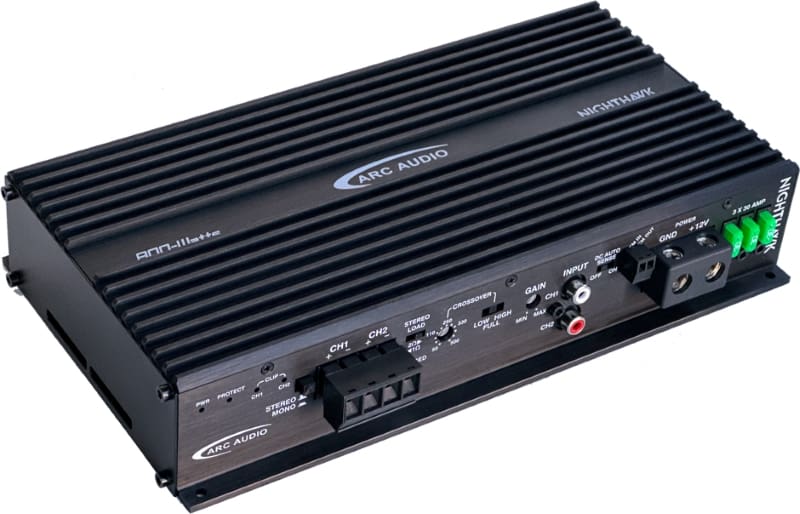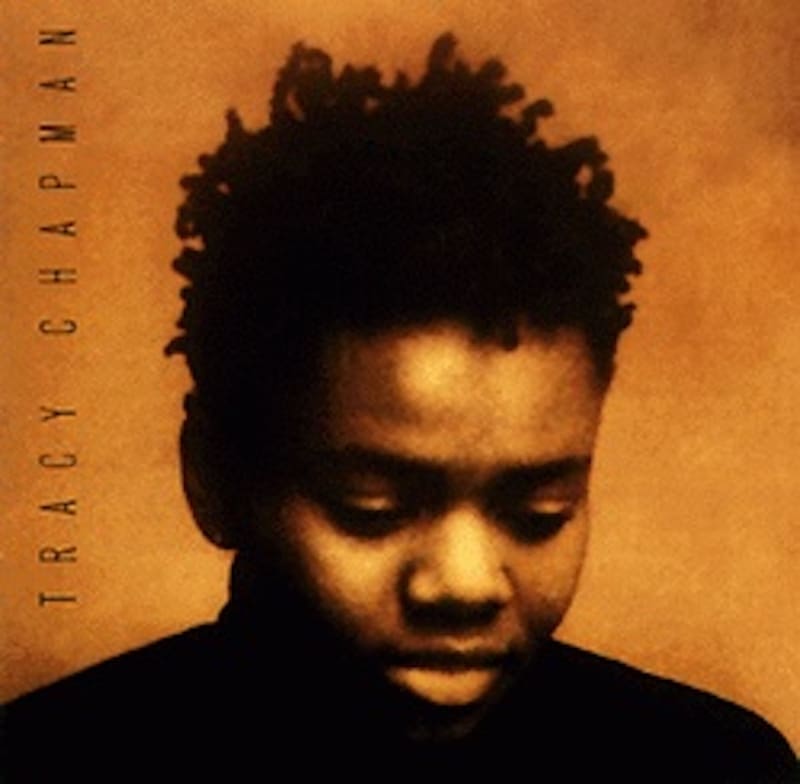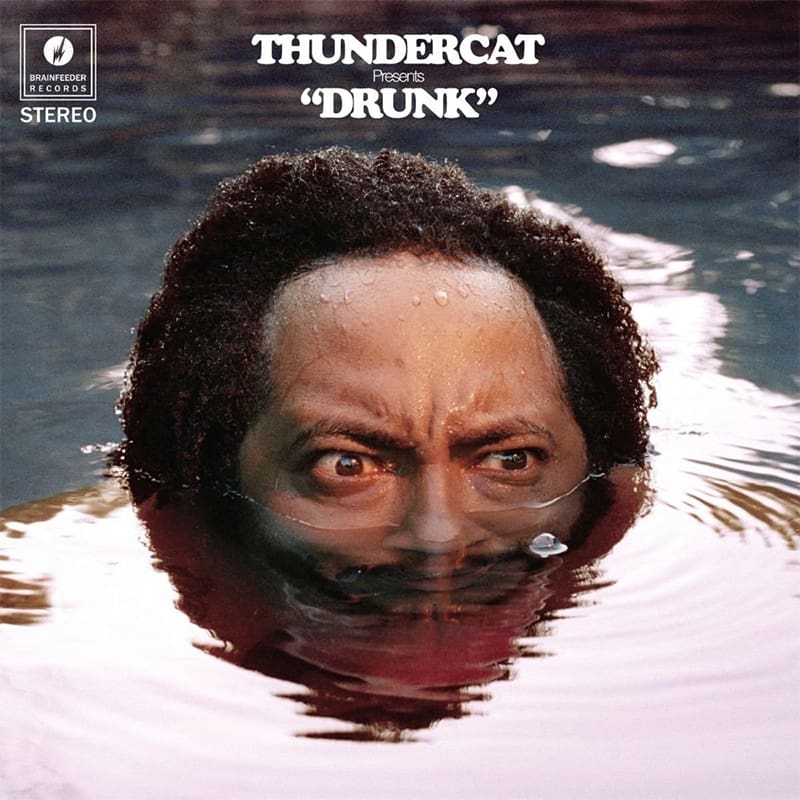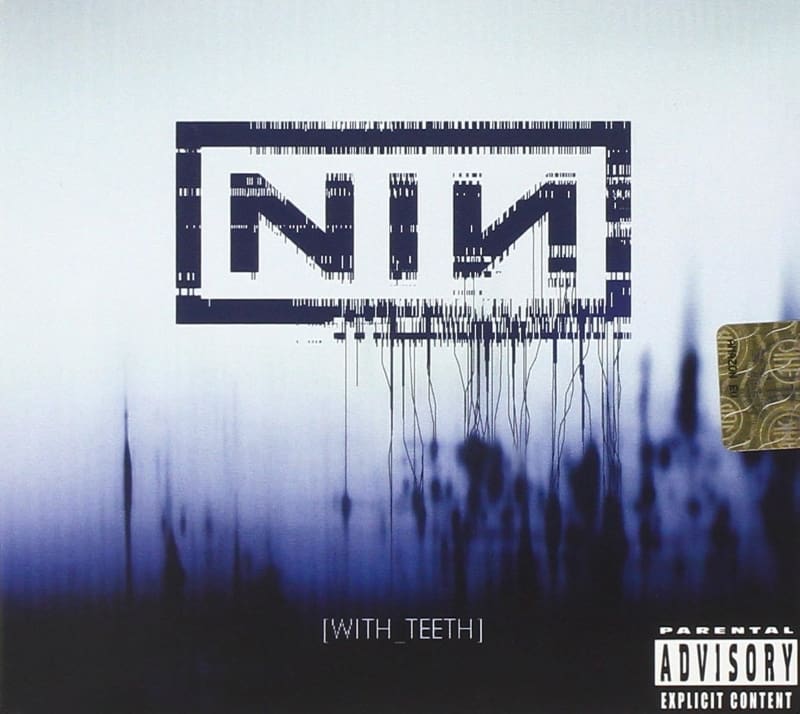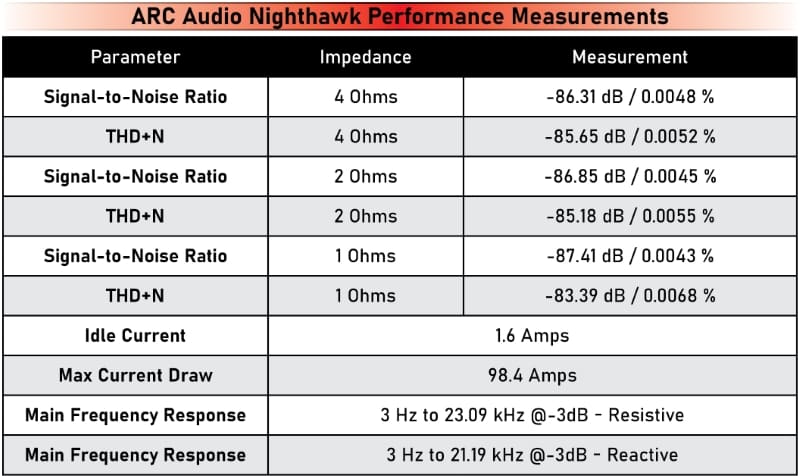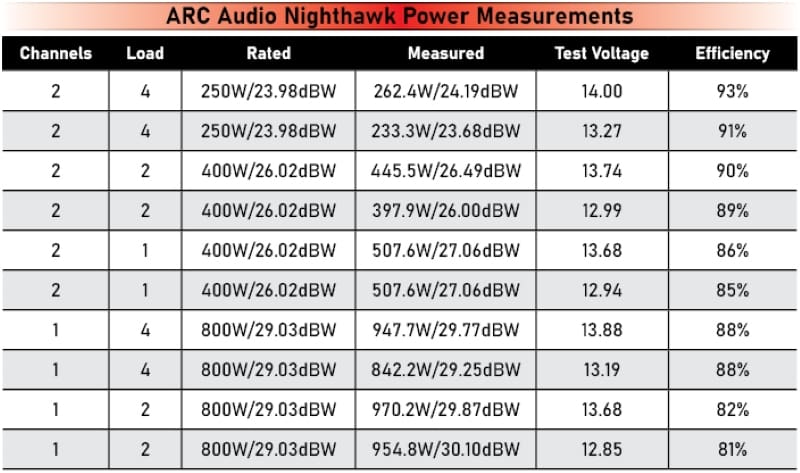If you’ve been a long-time BestCarAudio.com reader, you know we prioritize performance and reliability when choosing audio system components. With that said, an installation that looks good does matter. You don’t want a bunch of amplifiers in your vehicle that are all different shapes, designs or colors. This is your car or truck, and it should look clean and classy, not like a bowl of Skittles. ARC Audio, the brand responsible for the amazing Blackbird DSP amplifier, knew that their dealers wanted another amplifier in that family to deliver big power to subwoofers. The answer to that request is the new ARC Audio Nighthawk amplifier. We have one on the BestCarAudio.com bench for this Test Drive Review.
ARC Audio Nighthawk Design
The Nighthawk is based on the same extruded aluminum heatsink as the Blackbird. It measures an impressively compact 10.35 inches in length, 6 inches in depth and 2 inches tall. Crucially, it matches the size of the Blackbird perfectly.
ARC Audio rates this stereo amplifier as capable of producing 250 watts into 4-ohm stereo loads and 400 watts into 2- or 1-ohm stereo loads. The amp can be bridged to power a single 4- or 2-ohm load and provide a claimed 800 watts to either. While the original design concept was to create a subwoofer amp in the family, the engineers at ARC Audio knew they could make this a great-sounding two-channel, full-range amplifier.
The published specifications for the Nighthawk are impressive, with THD numbers below 0.02% from 100 mW to 200 watts and a best THD of 0.005% from 2 to 20 watts. Distortion is 0.009% from 20 hertz to 20 kHz at 1 watt. These are specifications that many high-end Class AB amps costing several times as much can’t come close to. Noise is specified as -88 dB referenced to 1-watt or -113 dB when referenced to full power. Audio precision graphs are on the Nighthawk product page (https://www.arcaudio.com/dsp-amplifiers/nighthawk-amplifier) for those wanting more information. Of course, we’ll see how it performs on our bench.
Just as with the Blackbird, the development team at ARC Audio spent a significant amount of time listening to prototypes and fine-tuning the amp before it went into production. Given the ARC Audio staff’s prowess in car audio system tuning capabilities and their success in auto sound competitions, they put significant value into these efforts. They mentioned the circuitry they fine-tuned the most, but we’ll keep that under wraps as part of the secret sauce that makes their products sonically special.
Amplifier Features and Controls
In terms of features, the Nighthawk includes everything you’d expect from a modern amplifier. It has balanced differential inputs to eliminate noise and ground loop issues. The amp includes RCA pigtails with voltage-dividing networks to connect speaker-level signals up to 10 volts directly to the RCA input jacks. Automatic turn-on detection circuitry is included for easy integration, with a factory source unit that uses a BLT output configuration. Both the Blackbird and Nighthawk use driver ICs that are start-stop compatible. This allows the amplifiers to remain functional down to 4.6 volts and prevents them from turning off if the vehicle voltage drops during a restart.
The Nighthawk includes an adjustable high or low-pass filter that can be set between 50 and 500 Hz. The filter is a second-order (-12 dB/octave) design with a Linkwitz-Riley alignment. The crossover can be defeated if you’re using the Nighthawk with a digital signal processor. The amp features a switch to select between stereo and mono operation. There’s also a load selection switch for 4- or 2-ohm operation when bridged. You’d want your installer to put that switch in the 2-ohm setting if you’re running the amp into a pair of 1-ohm loads in stereo. There’s a remote output connection if you plan to use it to trigger other amplifiers in a system without a remote wire from an aftermarket source unit.
Looking at the connection options, a large terminal block at the right end of the side panel accepts four AWG power and ground wires. Three 30-amp ATM mini fuses provide reverse-polarity protection. Speaker connections are made via a heavy-gauge Phoenix-style connector and will accept 12 AWG cables. The amp has separate power and protection LEDs and dedicated clipping indicators for each channel. The only thing we’d want to add is a remote level control option. If you’re using the amp with any of ARC Audio’s digital signal processors, they have do provisions for that.

ARC Audio Nighthawk Internal Inspection
If you’ve taken apart as many amps as I have, you start to recognize designs. The Nighthawk is a classic ARC Audio layout. Looking down at the circuit board, the power and ground connections are on the far left. Current from the positive terminal flows through a large inductor, then fills five 2,700-microfarad, 16-volt capacitors before going to the switching devices on the rear of the chassis. The output of the devices feeds the transformer. From there, four 2,200-microfarad, 63-volt capacitors provide filtering and energy storage for the rails.
Signal processing happens in the lower center of the amp. Audio is passed to the top-right section from there, meeting the drivers and output switching devices. The finned cast-aluminum heatsink in the middle of the amp extracts heat from eight Infineon 190N15NS 125-watt, 50-amp surface-mount output MOSFETs before going to the filter network. The output filter chokes are enclosed to help manage RF noise.
ARC Audio uses a microcontroller-managed cooling fan in the rear center of the amps heatsink to draw air in from the ends of the amp, along the heatsink fins, and then into the body of the amplifier. From there, the warmer air exits through small fins on the side panels. This is a very different and exponentially more functional design than amps that blow air onto the circuit board with a fan on the bottom panel or end of the chassis. Of course, the fan stays quiet until needed, so it’s not making a racket.
One interesting observation was that the circuit board has a moisture-resistant conformal coating over all the components. This doesn’t make the amp waterproof or even water-tight. However, if you have a dry mounting location on your boat or side-by-side, the Nighthawk would be a great solution for as many as eight 4-ohm wakeboard tower speakers or a serious collection of subwoofers.
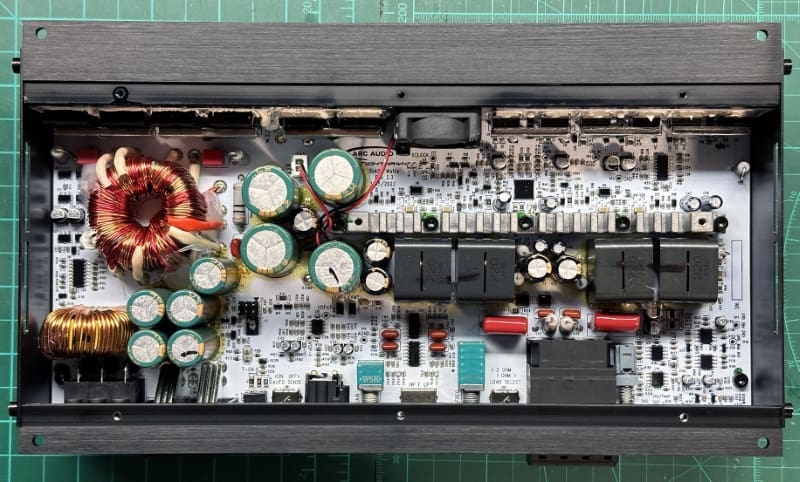
Auditioning the ARC Audio Nighthawk
I set the Nighthawk in the listening room in place of my ARC Audio SE2300 reference amplifier. The amp drives a pair of home-audio-style bookshelf speakers. The source unit is a Clarion DRZ9255 with upgraded op-amps.
Cutting straight to a tough challenge, I cued up “Fast Car” by Tracy Chapman. Luke Combs’ version is good, but I want the clarity of the original for this audition. The clarity of the amp made it easy to pick out the decay in Tracy’s voice. Whether it’s processed or an artifact of the room, you could hear each final consonant or vowel fade away quickly. The clarity of the shaker and the guitar was impressive. The hammer hitting the kick drum had a solid impact, and the drum skin’s resonance was nice and clear. Overall, it was an amazing presentation.
I listened to “Uh Huh” by Thundercat next. If you aren’t familiar with his work, you might recognize him as bassist Stephen Bruner. He’s played with Suicidal Tendencies, Erykah Badu, Kendrick Lamar and Gorillaz, to name a few. He even made a guest appearance in The Book of Boba Fett in 2002. Nevertheless, Thundercat wields a bass guitar like few others. Through the Nightwawk, each pluck was clear, and you could get a sense of the string vibrating before he played another note. That’s exceptional clarity. I’d love to watch this guy play live!
Last up was “Right Where It Belongs” by Nine Inch Nails. The track opens with three minutes of Reznor singing with some bandwidth limiting. There’s a background of street traffic that sometimes seems three-dimensional. When Reznor’s full voice comes in, it’s clear and natural. The background sounds, likely synthesizers, are deliberately laden with harmonic distortion. It sounds clear and focused rather than a blurry mess. Finally, the track ends with a sustained A# into the final F5, G5 and A5 notes from a piano on the left channel. They have that wince and edge that only a good recording played back on a great system can deliver.
ARC Audio Nighthawk Bench Testing – Frequency Response
With the listening done, I took the Nighthawk over to the test bench and started running through my standard suite of performance tests. I started the testing with four response measurements because this amp can power 1-ohm loads. Driving a 4-ohm resistive load, the -3 dB point was 3 hertz on the bottom and 23.09 kHz on the top. Switching to my simulated reactive load didn’t affect the bottom but dropped the top a hair to 21.29 kHz. The reactive load showed a dip of a few tenths around 5.5 kHz and an increase of two-tenths around 10 kHz. Neither of these are anything to worry about.
As the load impedance dropped to 2 and finally 1 ohm, the -3 dB frequency on the top end did drop more. Again, this is very normal. If you’ll be using the Nighthawk as a subwoofer amp, none of this matters, aside from knowing it can reproduce extremely low-frequency information. Nobody in their right mind runs a full-range amp at 1 or 2 ohms at high frequencies.
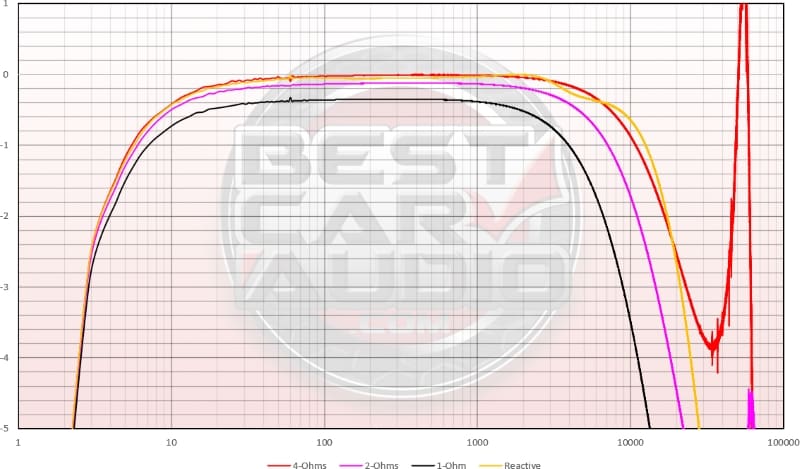
Next, I checked the function of the on-board crossover. When the crossover switch is set to the low or high setting, the output of the amp drops by 0.8 to 1 dB. The crossover frequency points align nicely at 50, 200 and 500 hertz. Your installer should set levels after setting crossovers.
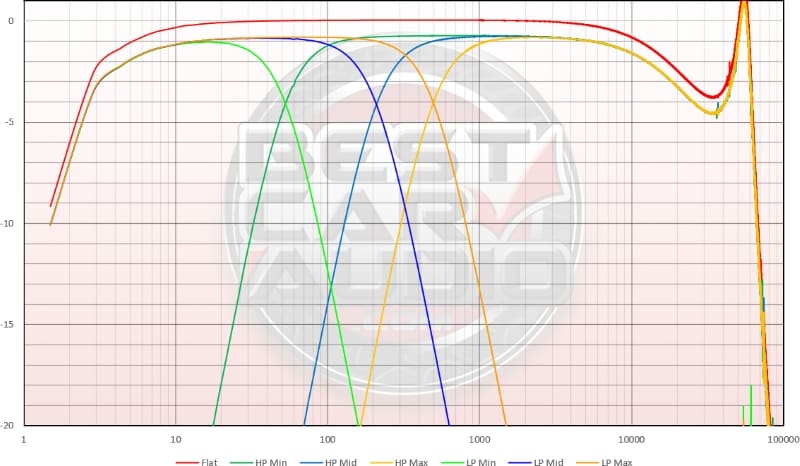
Nighthawk Distortion and Noise
Regarding noise and distortion, the numbers ARC Audio published are right on the money. I saw THD+N values at 0.0052% at 4 ohms while producing 1 watt of power into a 4-ohm load. Distortion remained excellent at 0.0055% at 2 ohms and 0.0068% at 1 ohm. The SNR measurements are very good at -86.3dB at 4 ohms, -86.85 dB at 2 ohms and -87.41 dB at 1 ohm. In short, the amp is clean and quiet.
Power Output Measurements
The last test, as always, was to measure power. Why? Power measurements don’t have much to do with sound quality. Nevertheless, the ARC Audio Nighthawk produced 262.4 watts into 4-ohm loads when supplied with 14.00 volts. Power was 445.5 watts per channel to 2-ohm loads and 507.6 watts into 1-ohm loads. Its bridged configuration produced 947.7 watts to a 4-ohm load and 970.2 watts to a 2-ohm load. Getting an extra 20% power from your investment is pretty cool, especially when most other car audio companies are stretching the truth about their power ratings.
The efficiency numbers align with what I typically see from ARC Audio products. They are better than most of what’s out there. At maximum output power into 4-ohm stereo loads, the amp was 93% efficient. I have measured a few other amps from ARC Audio in the 92% range, but 93 is one of the best I’ve seen. As is typical, the efficiency drops to around 90% for 2-ohm stereo loads and a still stellar 85% for 1-ohm loads.
Keep in mind, there are some similarly sized subwoofer amplifiers out there that are only about 57% efficient into a 1-ohm load. If both amps produced 950 watts, those other amps would need to draw around 122 amps of current, compared with 92 amps for the Nighthawk. Which do you think the electrical system in your vehicle and the wiring to your amplifier would prefer?
Conclusions on the ARC Audio Nighthawk
The ARC Audio Nighthawk sounds excellent, just like every amplifier I’ve had the pleasure of reviewing for the company. It offers industry-leading efficiency and measures exceptionally well regarding distortion and noise. There are hundreds, if not thousands, of options for subwoofer amplifiers on the market. There aren’t as many high-power full-range amplifiers, and even fewer that sound good. Given all the options, picking the best solution for your vehicle can be tricky and confusing. If the features of the Nighthawk fit your needs, buy it. You won’t be disappointed.
For more information on the Nighthawk and the Blackbird DSP amplifier, check out the ARC Audio website. You can find an authorized ARC Audio retailer near you by using their Dealer Locator tool. To learn more about ARC Audio’s full line of amplifiers, speakers, subwoofers and digital signal processors, follow them on Facebook or Instagram. There are also some great videos on their YouTube channel.

